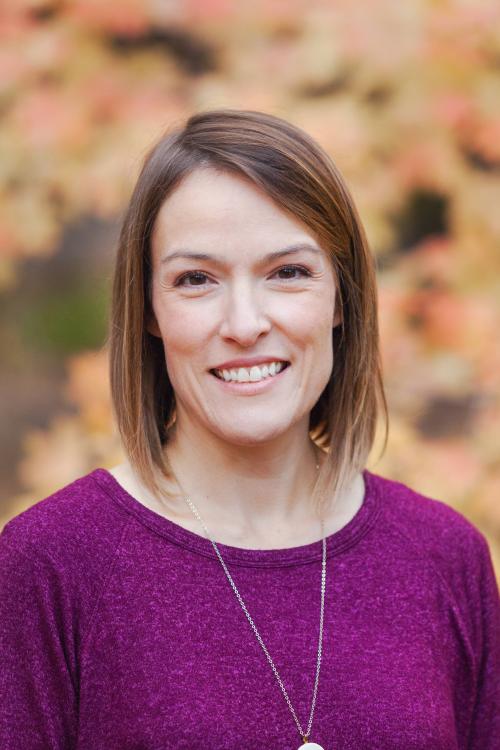
By Sara Israelsen-Hartley MPP'23
An old journalism adage proclaims: “if it bleeds, it leads.”
Yet today, there are so many examples of people “being rotten to one another and seeing whether they can get away with it,” that it’s hard to notice much else, bemoaned Susan Stamberg, a founding mother of NPR and the first woman to anchor a daily news program. “How do we bring us together again?”
Her poignant question came up during a Zoom discussion on April 5 between Stamberg, fellow NPR-co-founder, Linda Wertheimer, and moderator, Frank Bruni, a New York Times columnist and Sanford professor.

During the conversation, held in honor of the 50th anniversary of the Sanford School of Public Policy, and the 50th anniversary of NPR, (officially marked in May 2021), Bruni asked Stamberg and Wertheimer to reflect on the history and future of women in journalism and their perceptions of the media landscape today.
As a fellow woman in journalism, (though with a far less prestigious backstory), I loved hearing from two veteran reporters who blazed a trail with then “start-up” NPR.
“We did not have to fight against a legion of men who’d been hired 50 years ago and were in charge of everything,” Wertheimer said. “(Our editor) felt like Americans should listen to a radio program that sounded like other Americans talking, and he thought, ‘you can’t do that without women.’”
However, Wertheimer noted that back in 1971, hiring women was also a practical matter since they were less expensive than men — a fact that elicited a sort of collective sigh from the audience of students, professors, Duke alumni and community members gathered in Penn Pavilion.
Wertheimer, the first director of NPR’s All Things Considered, would go on to cover politics and congress from 1974 to 1989, becoming the first woman to anchor network coverage of a presidential nomination convention and election night in 1976.
Stamberg would go on to co-host NPR’s All Things Considered from 1972 until 1986 and win every major broadcasting award. Today she covers visual arts for NPR as a special correspondent.
“It’s really rough,” Stamberg said with a laugh. “Very few people are interested in art.”
The ongoing challenge, she explained, is figuring out “how to entrap you so that you’ll stay with me and pay attention to it.”
Too few people are willing to seek out information beyond what they already know they like, she said.
Wertheimer described how she tried “to make people eat their peas” by writing about governmental goings-on in clear, plain language.
Both women noted that today’s media landscape is increasingly different than when they started, when airwaves were ruled by three major stations: ABC, NBC and CBS.
Stamberg shared how she remembers sitting around the family radio listening to President FDR’s fireside chats, which “unified the country in a way that doesn't happen now,” she said. “There’s so much more competing for our attention.”
Today, that competition includes other media outlets, plus YouTube, TikTok, Facebook and any other social media distraction.
And they’re enticing.
Often I find myself — a reporter who understands the crucial role of journalism in a healthy democracy — drifting from news sites to the day’s Wordle.
The "Founding Mothers" took questions from the in-person audience, and from those listening on YouTube Live.
One student asked a question about how journalists should handle situations where showing both sides means repeating blatantly wrong information.
“That’s such a serious question,” Wertheimer responded. She noted the common phrase in journalism: “on the other hand.”
“Sometimes there is no other hand,” she said. “I think the question of always trying to tell the other side of something that may not have another side is something that we should reexamine.”
One such example is the conflict in Ukraine, where there is no “other side” to burned-out buildings and bodies lying in the street.
Such a real-time graphic display of war is something Wertheimer said she has never seen before.
“The coverage has revealed a tremendous and horrifying look at war, but on the other hand, it has given us a terrible time trying to understand what we’re looking at, and understanding where it goes from here,” she said.
Stamberg recounted a story about her friend and New York Times photo editor, John G. Morris, who defended the use of the photo of a young Vietnamese girl running down the road after a napalm bombing raid — despite a New York Times policy against nudity in photos.
She said Morris fought to publish that photo so Americans could see that “war is, in fact, hell, and this is the most vivid way to make people aware of it.”
His resolve resonates with me.
Increasing awareness is what motivates journalists — the belief that somehow, despite long hours, low pay and tough assignments, our work makes a difference.
For anyone thinking about a career in journalism, Stamberg told the audience, it’s a noble cause.
“Consider it seriously,” she said. “Journalism is what shines the light in the darkest places.”
Sara Israelsen-Hartley is a veteran journalist and first year MPP student at Sanford who is studying the intersection of health and social policy, as well as how policy is communicated through the media. During her 15+ years as a reporter she has covered criminal justice, city government, public health crises and social issues impacting women and children. Originally from Columbia, Missouri, she and her family now call North Carolina home.